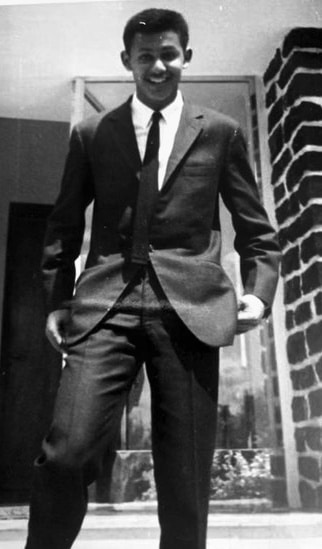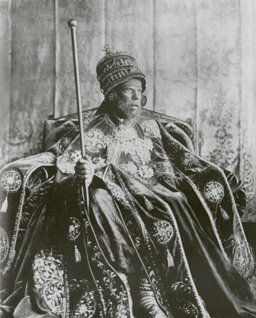The Duke of Harar, Prince Wossen Seged Makonnen Haile Selassie, passed away on November 10, 2021, in the United States. Born in 1947, he was the eldest child of Prince Makonnen Haile Selassie and Princess Sara Gizaw, making him a grandson of Emperor Haile Selassie I and Empress Menen Asfaw of Ethiopia. This significant loss has sent shockwaves across the world, as the Duke of Harar was a prominent figure in the Imperial family and a symbol of the rich history of Ethiopia.
Prince Wossen Seged was formally installed as Duke of Harrar at the tender age of nine, following the death of his father in 1957. He received his education in the United Kingdom and Switzerland before returning to Ethiopia. His life was marked by significant events, including imprisonment by the Derg regime from 1974 to 1989 and later moving to the United States where he lived a happy life with his wife. The outpouring of condolences from around the world is a testament to the deep affection and respect for the Duke of Harar.
what were the key achievements of the Duke of Harar during his lifetime

- Education and Early Life: Prince Wossen Seged received his education in the United Kingdom and Switzerland before returning to Ethiopia. This exposure to Western culture and education was significant, as it helped shape his perspective and worldview.
- Imprisonment and Release: The Duke of Harar was among the members of the Imperial family to be imprisoned by the Derg regime following the overthrow of the monarchy in 1974. He was held under harsh conditions until his release in 1989 along with his brothers.
- Life in the United States: After his release, Prince Wossen Seged moved to the United States, where he married and lived happily for many years. This marked a significant shift in his life, as he adapted to a new culture and built a new life.
- Family and Legacy: The Duke of Harar is survived by his wife, the Dowager Duchess of Harar (née Connie Jo Quave), and his brothers. His passing has sent shockwaves across the world, with many expressing their condolences and respect for his life and legacy.
These achievements highlight the significant events and experiences that shaped the Duke of Harar’s life, from his early education to his imprisonment and eventual life in the United States.
what were the Duke of Harar’s contributions to Ethiopian culture and history

- Family Legacy: As a grandson of Emperor Haile Selassie I and Empress Menen Asfaw, the Duke of Harar was part of the Imperial family that played a crucial role in shaping Ethiopia’s history. His family’s legacy includes the significant achievements of Emperor Haile Selassie, who modernized Ethiopia and maintained its independence during World War II.
- Imprisonment and Release: The Duke of Harar was imprisoned by the Derg regime from 1974 to 1989, along with his brothers. This experience highlights the challenges faced by the Imperial family during the period of political turmoil in Ethiopia.
- Cultural Preservation: Although the Duke of Harar lived in the United States, he maintained connections to his Ethiopian heritage. His family’s involvement in the country’s history and his personal experiences contributed to the preservation of Ethiopian culture and traditions.
- Symbol of Imperial Family: As a member of the Imperial family, the Duke of Harar symbolized the rich history and cultural heritage of Ethiopia. His passing has sent shockwaves across the world, with many expressing their condolences and respect for his life and legacy.
These contributions demonstrate the significant role the Duke of Harar played in Ethiopian culture and history, both through his family’s legacy and his personal experiences.
how did the Duke of Harar’s heritage influence his contributions to Ethiopian culture
- Imperial Family Legacy: As a member of the Imperial family, the Duke of Harar was part of a long line of Ethiopian monarchs who played a crucial role in shaping the country’s history and culture. His family’s legacy included the significant achievements of Emperor Haile Selassie, who modernized Ethiopia and maintained its independence during World War II.
- Prison and Release: The Duke of Harar was imprisoned by the Derg regime from 1974 to 1989, along with his brothers. This experience highlighted the challenges faced by the Imperial family during the period of political turmoil in Ethiopia. His release and subsequent life in the United States further underscored the resilience and adaptability of the Imperial family.
- Cultural Preservation: Although the Duke of Harar lived in the United States, he maintained connections to his Ethiopian heritage. His family’s involvement in the country’s history and his personal experiences contributed to the preservation of Ethiopian culture and traditions.
- Symbol of Imperial Family: As a member of the Imperial family, the Duke of Harar symbolized the rich history and cultural heritage of Ethiopia. His passing has sent shockwaves across the world, with many expressing their condolences and respect for his life and legacy.
These factors demonstrate how the Duke of Harar’s heritage influenced his contributions to Ethiopian culture, from his family’s legacy to his personal experiences and connections to the country.
 |
| The Duke of Harar in front of a picture of his late father. |
The Duke of Harar died on 10 November 2021 in the United States. He is survived by his wife, the now Dowager Duchess of Harar (née Connie Jo Quave). The duke was a grandson of Emperor Haile Selassie of Ethiopia.
A communiqué was issued by the duke’s brothers after his passing:
Statement of their Imperial Highnesses Prince Michael Makonnen, Prince Tafari Makonnen and Prince Beede Mariam Makonnen.
It is with deep sorrow that we announce the passing of our beloved brother, His Imperial Highness the Duke of Harrar, Prince Wossen Seged Makonnen Haile Selassie after a long illness.
Prince Wossen Seged, (“Paul”) was born in Addis Ababa, on the 21st of August, 1947, the eldest child of their Imperial Highnesses Prince Makonnen Haile Selassie and Princess Sara Gizaw, the late Duke and Duchess of Harrar. He was thus a beloved grandson of His Imperial Majesty Emperor Haile Selassie I and Empress Menen Asfaw of Ethiopia. After the death of his father Prince Makonnen in May 1957, Prince Wossen Seged was formally installed as Duke of Harrar just a few months before his 10th birthday. Prince Wossen Seged received his education in the United Kingdom and Switzerland, before returning to Ethiopia. He was among the members of the Imperial family to be imprisoned by the Derg regime following the overthrow of the monarchy in 1974, and was held under harsh conditions until he was released in 1989 along with his brothers. His Imperial Highness then moved to the United States to the state of Nevada where he married and lived happily for many years. Prince Wossen Seged passed away on November 10, 2021, and is survived by his widow, his brothers, and larger extended family who loved him very much.We would like to express our deep gratitude to the many people from all over the world who have reached out to us to offer their sympathies at this difficult time. We are very moved by the affection shown towards our brother, and to our family. The funeral will be held in privacy in light of circumstances, and we ask for everyones understanding. May God rest the soul of our dear brother Prince Wossen Seged in paradise, and may his memory be eternal.
what were the Duke of Harar’s major contributions to Ethiopia
- Education and Early Life: Prince Wossen Seged received his education in the United Kingdom and Switzerland before returning to Ethiopia. This exposure to Western culture and education was significant, as it helped shape his perspective and worldview.
- Imprisonment and Release: The Duke of Harar was among the members of the Imperial family to be imprisoned by the Derg regime following the overthrow of the monarchy in 1974. He was held under harsh conditions until his release in 1989 along with his brothers.
- Life in the United States: After his release, Prince Wossen Seged moved to the United States, where he married and lived happily for many years. This marked a significant shift in his life, as he adapted to a new culture and built a new life.
- Family and Legacy: The Duke of Harar is survived by his wife, the Dowager Duchess of Harar (née Connie Jo Quave), and his brothers. His passing has sent shockwaves across the world, with many expressing their condolences and respect for his life and legacy.
These achievements highlight the significant events and experiences that shaped the Duke of Harar’s life, from his early education to his imprisonment and eventual life in the United States.
As we conclude our tribute to the life and legacy of the Duke of Harar, we would like to express our deepest gratitude to all those who have taken the time to read about this remarkable individual. The Duke of Harar’s story is a testament to the resilience and adaptability of the Imperial family, who have faced numerous challenges throughout their history. From his early life in Ethiopia to his imprisonment and eventual release, the Duke of Harar’s journey is a powerful reminder of the importance of perseverance and determination.
The Duke of Harar’s contributions to Ethiopian culture and history are undeniable, and his passing has sent shockwaves across the world. As a grandson of Emperor Haile Selassie I and Empress Menen Asfaw, the Duke of Harar was part of a long line of Ethiopian monarchs who have played a crucial role in shaping the country’s history and culture. His life was marked by significant events, including his imprisonment by the Derg regime and his eventual move to the United States. Despite these challenges, the Duke of Harar remained committed to his heritage and continued to serve as a symbol of the Imperial family’s legacy. We hope that his story will continue to inspire future generations and serve as a reminder of the importance of preserving cultural heritage.
what were the Duke of Harar’s main achievements after his release from prison
- Settling in the United States: The Duke of Harar moved to the state of Nevada in the United States, where he married and started a new life. This marked a significant shift from his earlier life in Ethiopia, where he was part of the Imperial family and faced challenges during the period of political turmoil.
- Family and Personal Life: The Duke of Harar built a happy family life with his wife, the Dowager Duchess of Harar (née Connie Jo Quave). He was known to be a devoted husband and father, and his family was very important to him.
- Community Involvement: Although the Duke of Harar lived in the United States, he remained connected to his Ethiopian heritage and was involved in various community activities. His life in the United States was marked by a sense of belonging and a commitment to his cultural roots.
- Legacy: The Duke of Harar’s life and legacy serve as a testament to the resilience and adaptability of the Imperial family. His story highlights the challenges faced by the family during the period of political turmoil and their ability to overcome these challenges and build new lives.
These achievements demonstrate the significant contributions the Duke of Harar made to his family and community after his release from prison.


